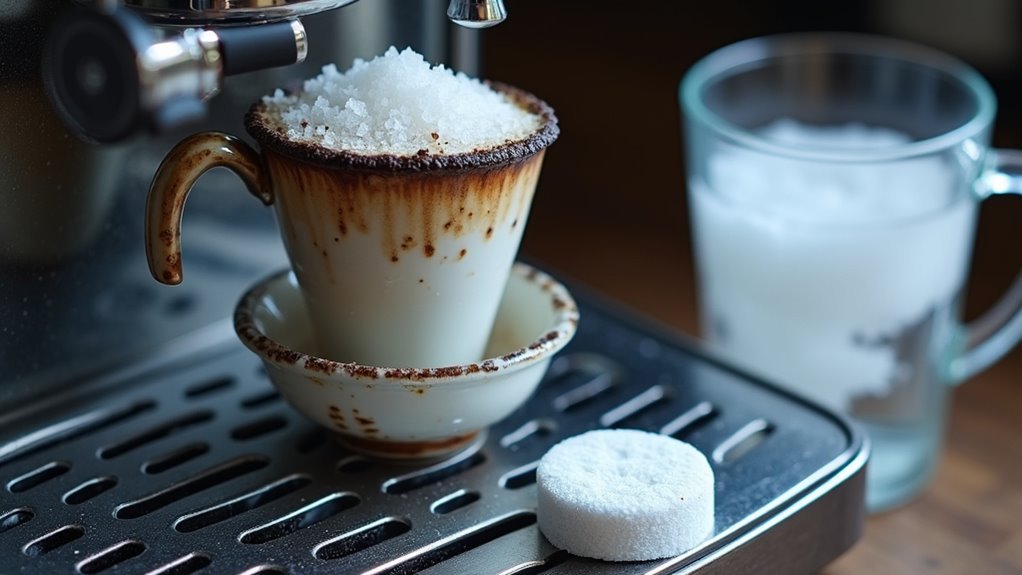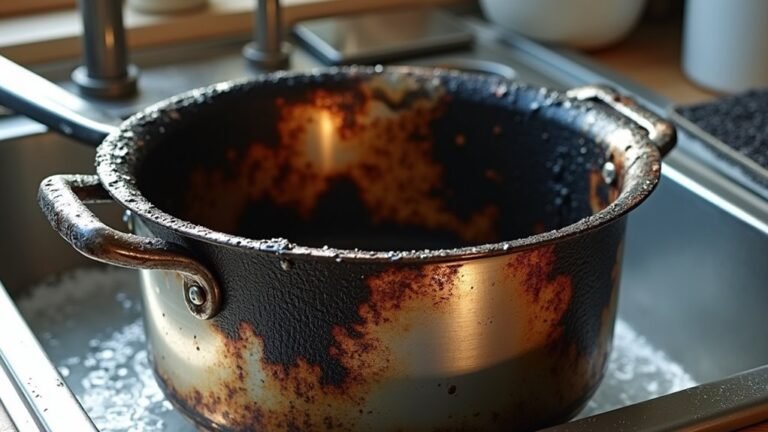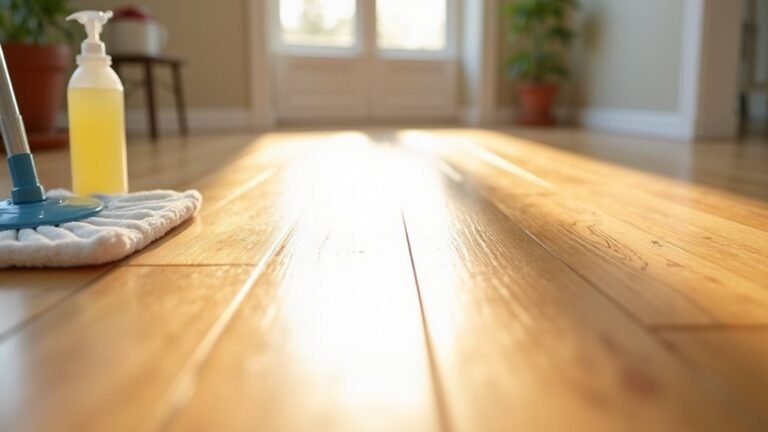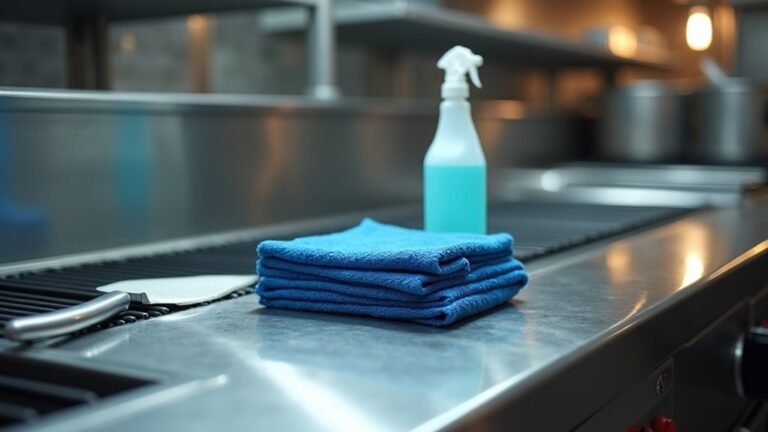Did you know that even tiny bits of mineral buildup in your DeLonghi espresso maker can make your coffee taste bad before you can even see them? These hidden mineral deposits can make your espresso taste bitter or stop that creamy foam from forming on top. According to DeLonghi’s official maintenance guide, “regular descaling helps preserve the taste of your coffee and extends the life of your machine.” While cleaning your machine might not seem fun, it’s really important if you want your coffee to taste as good as it did when your machine was new. Let’s learn how to keep your DeLonghi working great.
Why Descaling Matters

Why should you care about descaling your DeLonghi espresso machine?
Simply put, mineral buildup can ruin your morning ritual.
We’ve found it leads to bitter or sour flavors that just don’t satisfy.
Plus, that perfect crema you’re after?
It’s nearly impossible with scale buildup.
Not to mention the strange noises and slow brewing that’ll drive anyone crazy.
Trust us, regular descaling every 1-2 months is worth it. Additionally, monthly descaling helps prevent buildup and guarantees peak brewing performance.
##
We’ll walk through the essential things to do when cleaning your DeLonghi espresso maker, along with what you should definitely avoid during the process.
I think following the proper steps makes all the difference in maintaining your machine’s performance, perhaps extending its lifespan by years. Regular cleaning is crucial to prevent harmful bacteria from affecting the taste of your coffee.
Let’s jump right into these cleaning recommendations, which will help you keep your coffee tasting its best.
Things to Do When Cleaning A DeLonghi espresso maker
Cleaning your DeLonghi espresso maker regularly is essential for maintaining ideal performance and extending the lifespan of your machine.
Proper cleaning removes mineral deposits, coffee oils, and residue that can affect the taste of your espresso and potentially damage internal components over time.
A thorough cleaning also guarantees that your machine continues to brew at the ideal temperature and pressure for perfect espresso extraction.
- Prepare the machine – Turn off and unplug the espresso maker to guarantee safety before starting the cleaning process.
- Empty components – Remove and discard water from the reservoir and empty the drip tray to prevent spills during cleaning.
- Clean the portafilter – Remove used coffee grounds from the portafilter and brewing chamber to prevent them from interfering with the descaling process.
- Mix descaling solution – Combine the DeLonghi descaling solution with water following the manufacturer’s recommended ratio for effective mineral deposit removal.
- Run descaling cycle – Activate the machine according to the user manual instructions to circulate the descaling solution throughout the internal components.
- Rinse thoroughly – Flush the system with clean water multiple times to remove any traces of descaling solution and guarantee your next cup tastes perfect.
Things to Avoid When Cleaning A DeLonghi espresso maker
When cleaning your DeLonghi espresso maker, there are several critical mistakes to avoid that could potentially damage your machine or compromise the quality of your coffee.
Proper maintenance requires following specific guidelines to guarantee both safety and ideal performance of your espresso maker.
Being aware of these pitfalls will help extend the lifespan of your machine while maintaining the rich flavor profile of your daily brews.
- Using tap water for descaling – Introduces additional minerals that contribute to buildup rather than removing it; always use distilled or filtered water for cleaning cycles.
- Cleaning while plugged in – Creates dangerous electrical hazards and risks damaging internal components; always unplug and allow the machine to cool completely before cleaning.
- Overfilling the water reservoir – Exceeding the manufacturer’s fill line with descaling solution can cause improper flow and potential malfunction during the cleaning process.
- Using unauthorized cleaning agents – Vinegar and abrasive cleaners can damage internal components; only use DeLonghi-approved descaling solutions designed specifically for espresso machines.
- Skipping thorough rinsing cycles – Failing to run multiple clean water cycles after descaling leaves chemical residue that affects coffee taste and can be harmful; always complete all recommended rinse cycles.
Steps
Proper descaling of your DeLonghi espresso machine is essential for maintaining best performance and extending the lifespan of your coffee maker.
Regular descaling removes mineral deposits that accumulate over time from water passing through the machine, which can affect the taste of your espresso and potentially damage internal components.
Following the correct procedure guarantees that your machine continues to produce excellent coffee while preventing costly repairs.
Step 1: Turn off and unplug your DeLonghi espresso machine for safety.
Step 2: Remove and empty the water reservoir, drip tray, and clean out any coffee grounds from the portafilter and brewing chamber.
Step 3: Prepare the descaling solution by mixing DeLonghi descaling solution with filtered or distilled water according to the manufacturer’s instructions.
Step 4: Fill the water reservoir with the prepared descaling solution, being careful not to exceed the maximum fill line.
Step 5: Place a large container under the brewing head to catch the descaling solution as it runs through.
Step 6: Activate the descaling cycle following the specific instructions in your machine’s user manual.
Step 7: Allow the descaling cycle to complete, making sure the solution passes through all internal components.
Step 8: Empty and rinse the water reservoir thoroughly after the descaling cycle finishes.
Step 9: Fill the reservoir with clean water and run at least 2-3 rinse cycles to remove any remaining descaling solution.
Step 10: Repeat the rinsing process until any taste or smell of descaling solution is eliminated.
Step 11: Reassemble all components and your machine is ready for brewing again.
Final Thoughts
Although maintaining an espresso machine might seem like a chore, we’ve found that the effort pays off tremendously in the long run.
Regular descaling every month or two, especially if your water is hard, prevents those frustrating brewing issues we’ve all experienced.
We think consistent maintenance is perhaps the best investment you can make in your DeLonghi.
After all, a well-kept machine delivers better-tasting espresso and will likely serve you for years to come.
##

Regular descaling is one of the most important maintenance tasks you can perform for your DeLonghi espresso machine.
By taking the time every 1-2 months to properly descale your machine, you’re protecting your investment and ensuring consistently delicious espresso for years to come.
Remember that prevention is just as important as treatment—consider using filtered water for your daily brewing to reduce mineral buildup between descaling sessions.
Keep track of your descaling schedule based on your water hardness and usage patterns, and you’ll avoid many common espresso machine problems.
Don’t wait until you notice performance issues like slow brewing or poor-tasting coffee.
By then, significant buildup may have already occurred.
Make descaling a regular part of your coffee routine, just like grinding fresh beans or tamping properly.
Your DeLonghi deserves the care that keeps it performing at its best—and you deserve the perfect cup of espresso that a well-maintained machine provides.
Additionally, regular care is essential for efficient tankless water heater operation, which can also be applied to your espresso machine maintenance.
Happy brewing!






